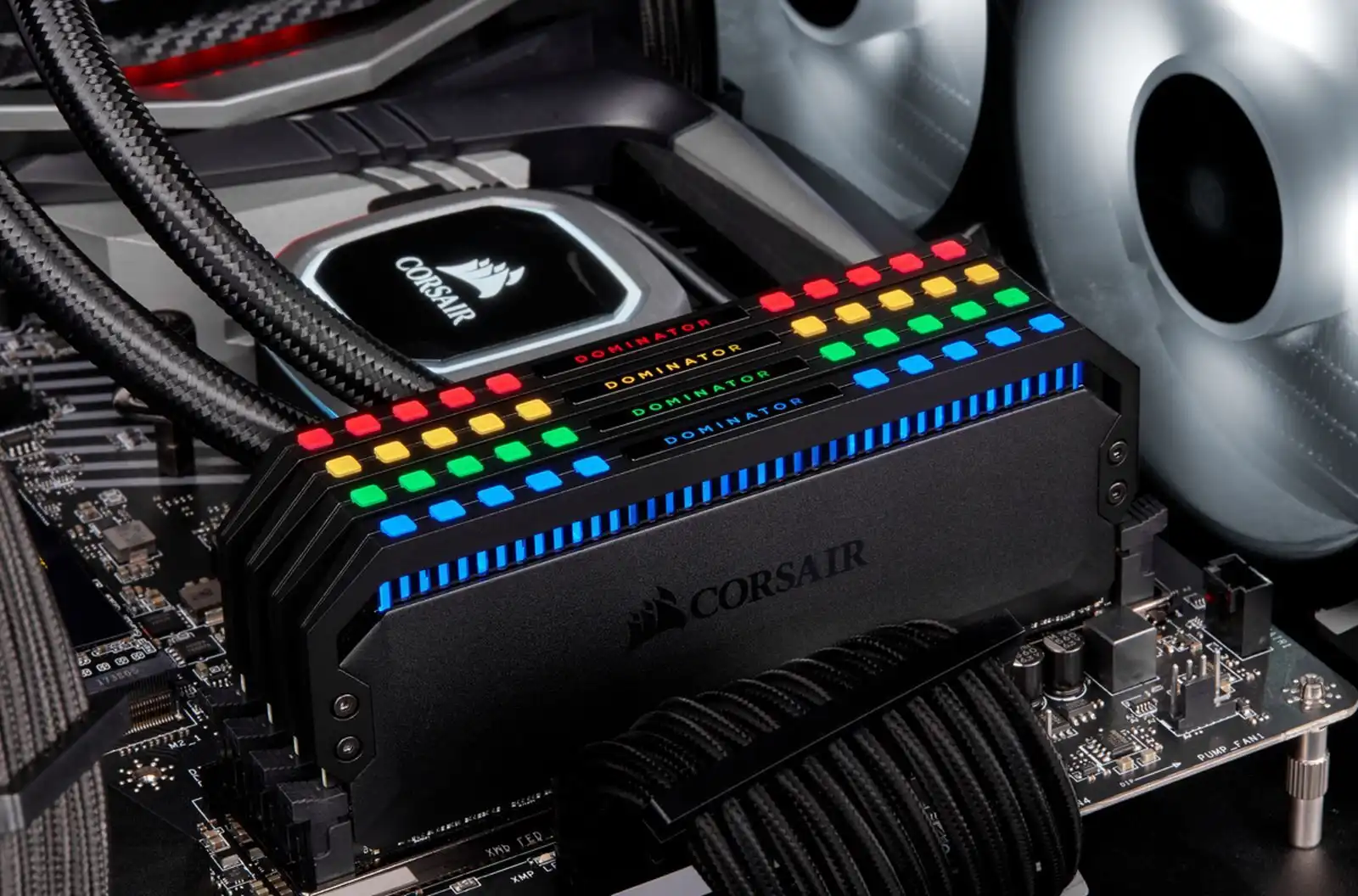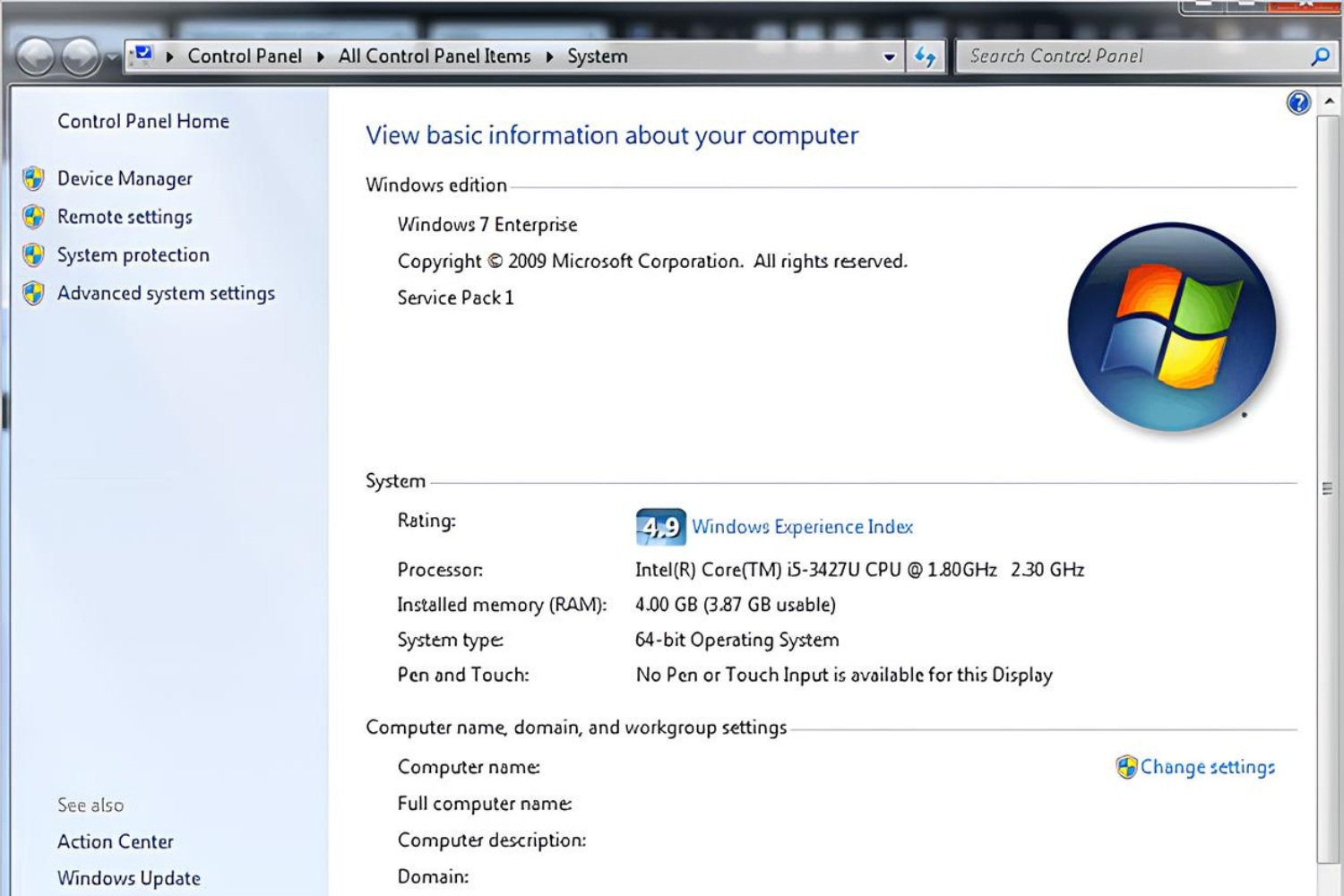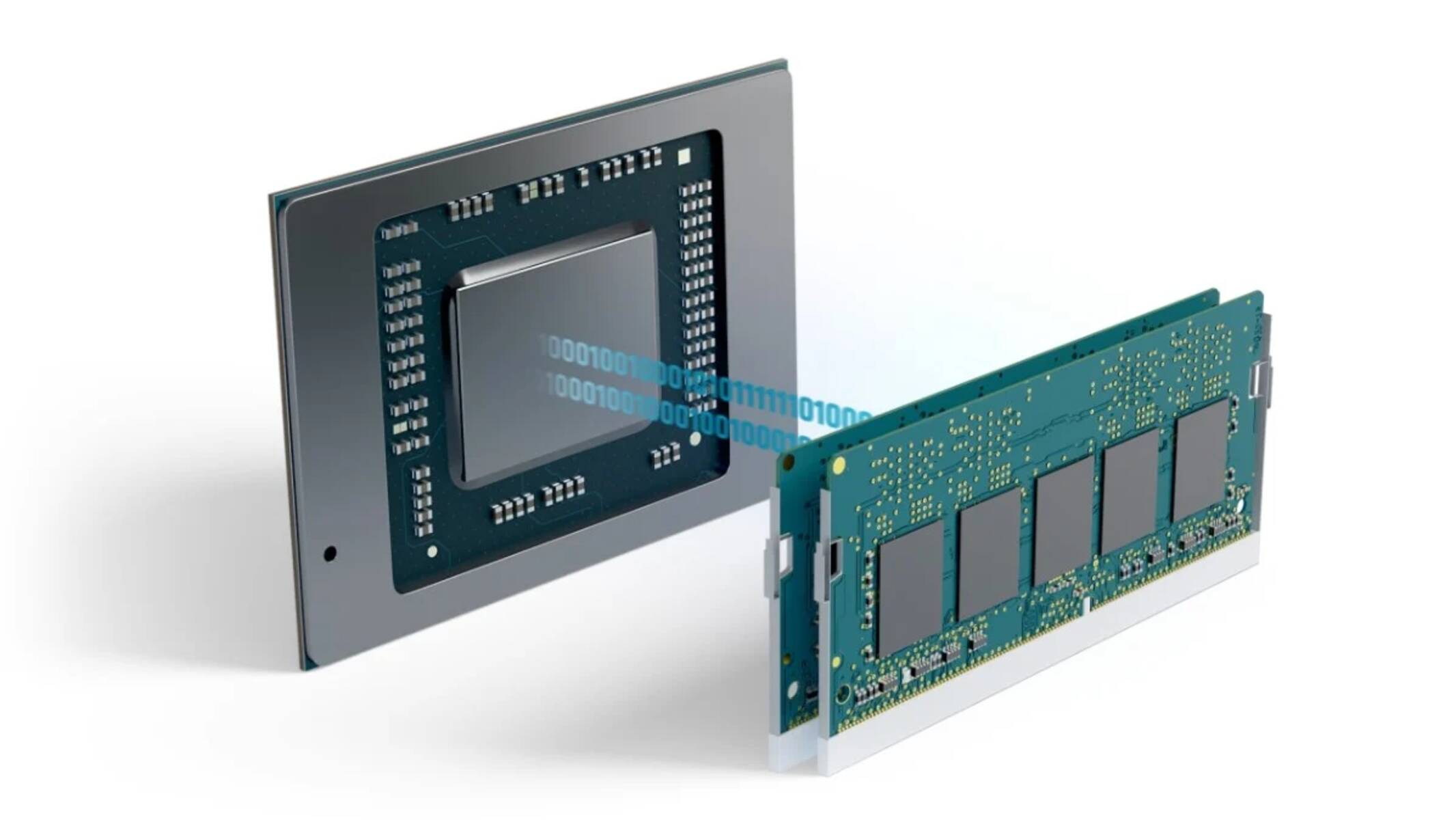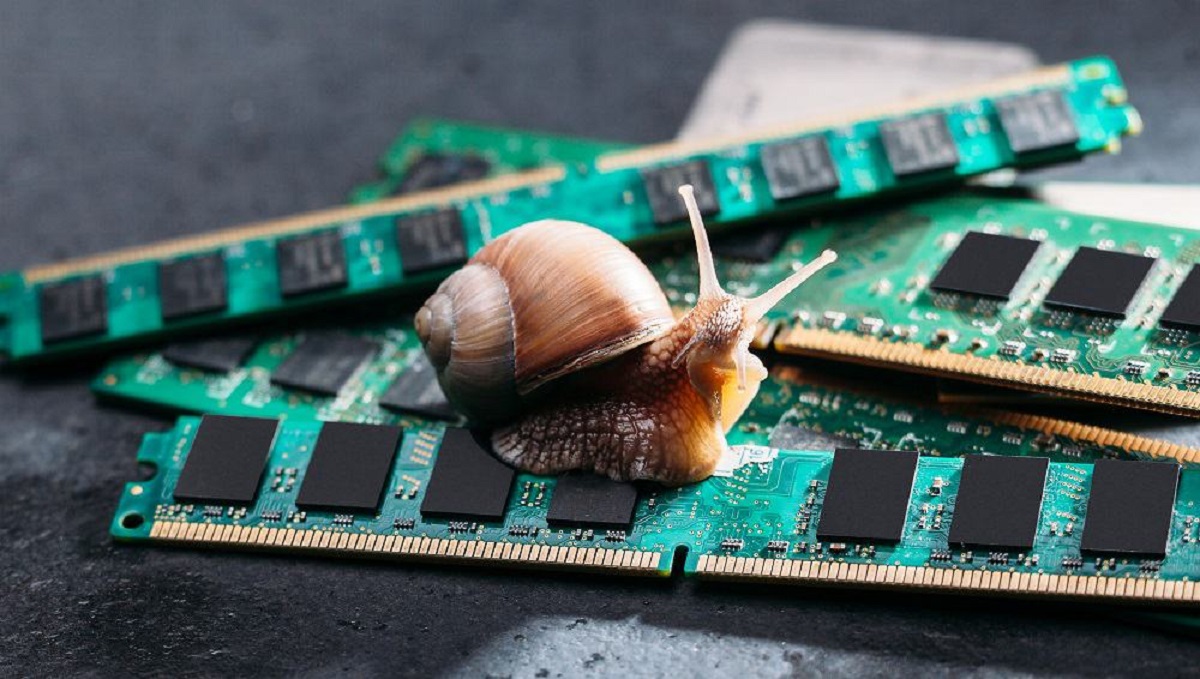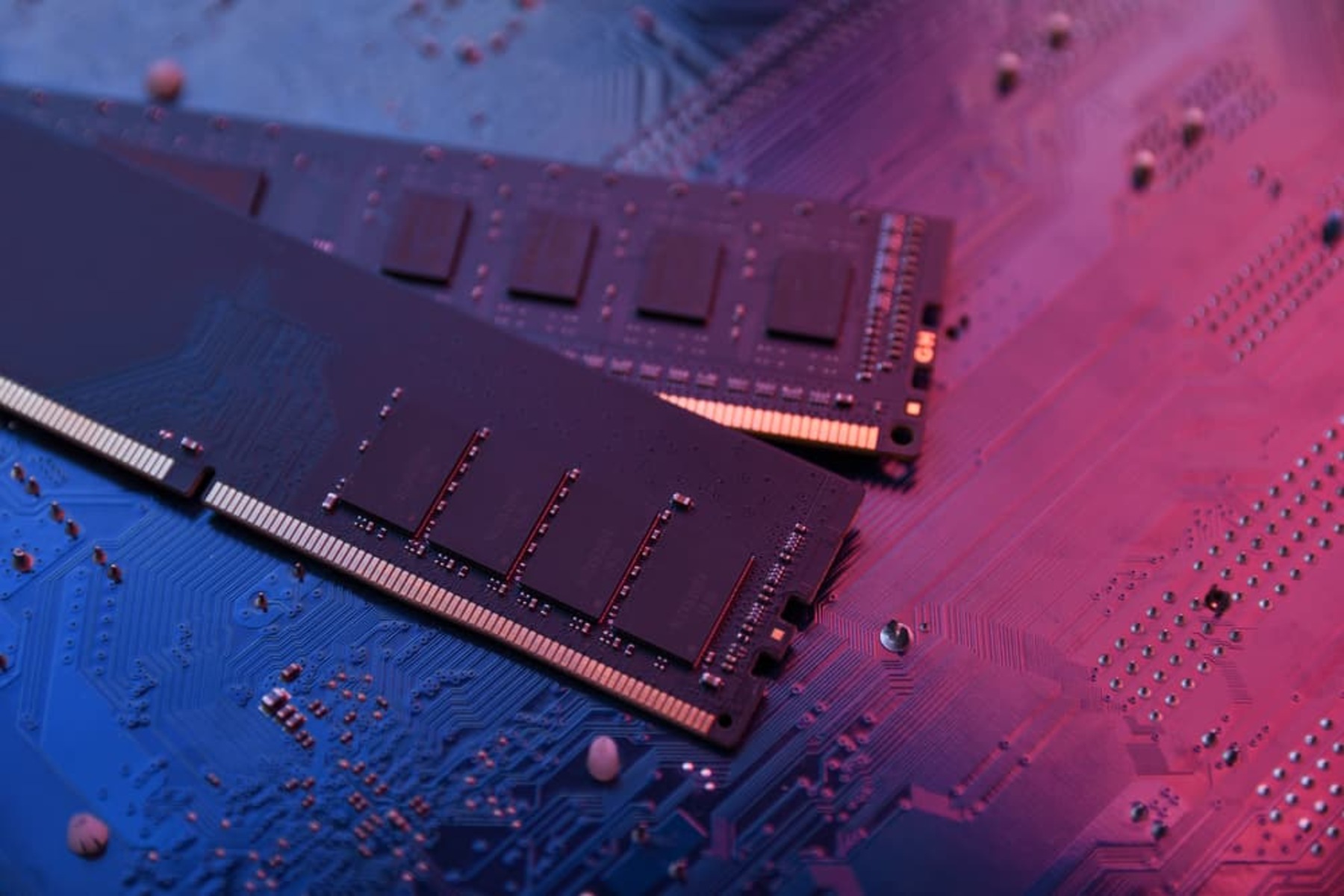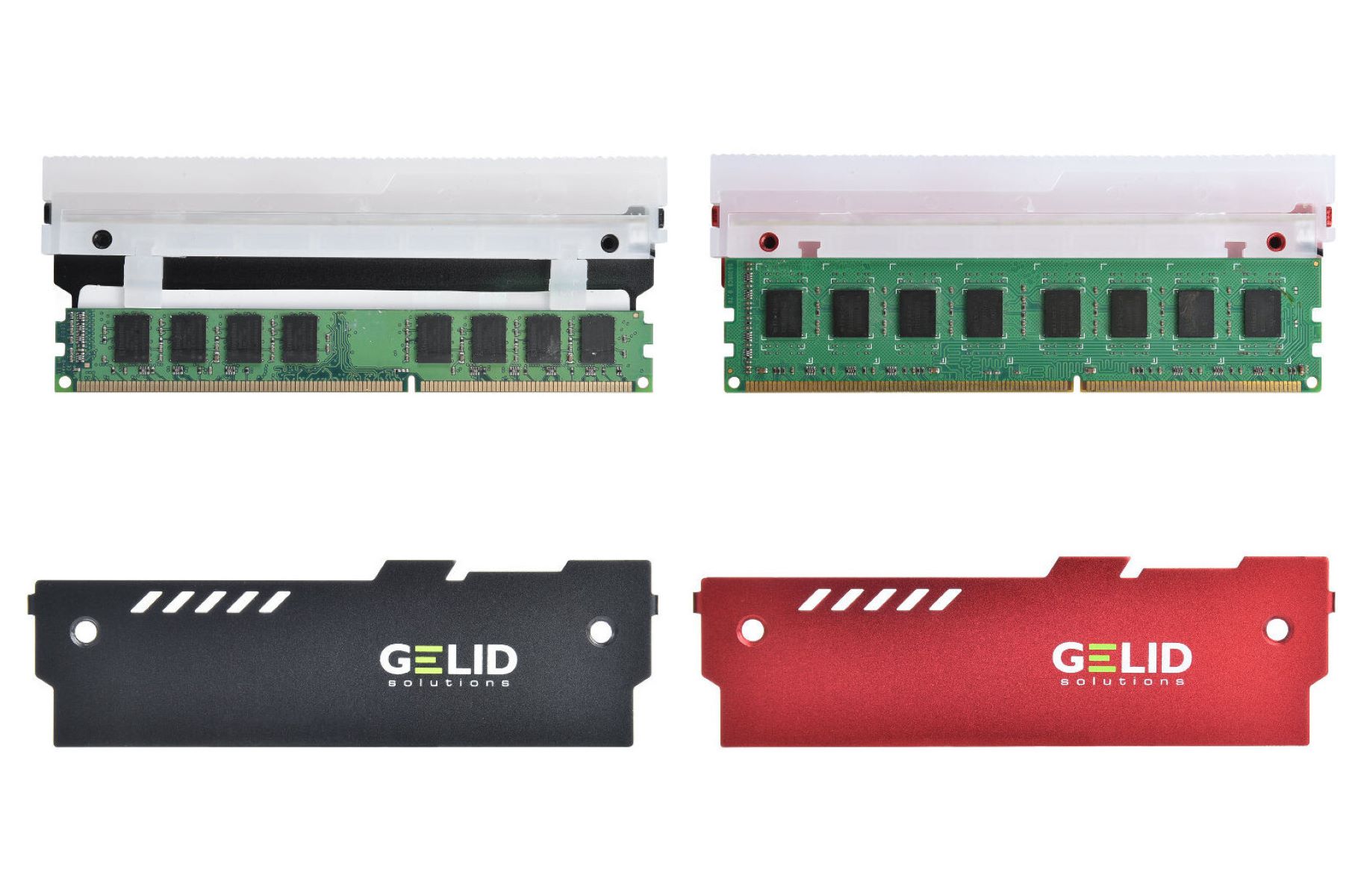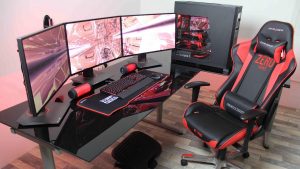Why is RAM important?
RAM, or Random Access Memory, is a crucial component of a computer system. It plays a vital role in determining the performance and speed of your computer. When you open a program or run an application, the data required to perform those tasks is temporarily stored in the RAM for quicker access.
One of the primary reasons why RAM is important is its ability to significantly improve the multitasking capability of your computer. With more RAM, your computer can handle multiple tasks simultaneously without slowing down. This is especially useful when you are working with resource-intensive software or running several programs at once.
Furthermore, RAM also affects the overall speed and responsiveness of your computer. When your system runs out of RAM, it starts using a portion of the hard drive called the “virtual memory.” However, the hard drive is significantly slower than RAM, which can result in a noticeable decrease in performance. Having adequate RAM allows your computer to access data quickly, ensuring smooth and efficient operations.
In addition to multitasking and speed, RAM also has a significant impact on gaming performance. Modern games often require a large amount of RAM to operate smoothly. Insufficient RAM can lead to lag, stuttering, and long loading times, which can significantly diminish the gaming experience. If you are an avid gamer, investing in ample RAM can make a noticeable difference in your gameplay.
Moreover, RAM capacity is essential for running memory-intensive applications such as video editing software, 3D modeling programs, and virtual machines. These applications require large amounts of memory to process and manipulate complex data. Having sufficient RAM ensures that these tasks are performed efficiently, saving you time and improving productivity.
Overall, RAM plays a crucial role in the functioning of your computer. It affects multitasking capabilities, processing speed, gaming performance, and the ability to run memory-intensive applications. Investing in sufficient RAM can enhance the overall performance and responsiveness of your computer, providing you with a smoother and more enjoyable computing experience.
Types of RAM
There are two common types of RAM used in computers: DDR3 (Double Data Rate 3) and DDR4 (Double Data Rate 4). Each type has its own characteristics and specifications, and it is essential to understand the differences between them when choosing RAM for your system.
DDR3 RAM is the older generation of RAM and has been widely used for many years. It operates at lower speeds compared to DDR4, typically ranging from 800MHz to 2133MHz. DDR3 RAM modules are backward compatible, meaning they can be used in motherboards that support DDR4, but at the lower DDR3 speed.
On the other hand, DDR4 RAM is the newer and faster generation. It provides higher speeds, ranging from 2133MHz to 3200MHz or even higher. DDR4 RAM modules are not compatible with DDR3 slots, and vice versa, due to differences in the physical design and electrical characteristics.
The primary advantage of DDR4 RAM is its improved performance. It offers faster data transfer rates, lower power consumption, and higher memory capacities compared to DDR3. This makes DDR4 RAM an ideal choice for resource-intensive tasks such as gaming, video editing, and professional applications.
Another factor to consider when choosing RAM is the voltage requirement. DDR3 RAM typically operates at a higher voltage (1.5V) compared to DDR4 RAM (1.2V). The lower voltage of DDR4 RAM contributes to better energy efficiency and reduced heat generation, making it a more power-efficient option.
It is important to note that the type of RAM you choose should be compatible with your motherboard. Check the specifications of your motherboard to ensure it supports either DDR3 or DDR4 RAM modules. Using the wrong type of RAM can result in compatibility issues and prevent your computer from booting up.
In summary, DDR3 and DDR4 are the two prevalent types of RAM used in computers. DDR4 offers superior performance, higher data transfer rates, lower power consumption, and increased memory capacities. However, it is crucial to choose RAM that is compatible with your motherboard to ensure proper functionality.
DDR3 RAM
DDR3 RAM, or Double Data Rate 3 RAM, is the older generation of RAM that has been widely used in computers for many years. It offers a reliable and affordable option for those who are not looking for the latest and highest performance RAM.
One of the primary characteristics of DDR3 RAM is its lower operating frequency compared to DDR4 RAM. DDR3 RAM typically operates at speeds ranging from 800MHz to 2133MHz. While it may not offer the same blazing-fast speeds as DDR4, it still provides sufficient performance for everyday computing tasks, such as browsing the internet, word processing, and multimedia playback.
Another advantage of DDR3 RAM is its backward compatibility with older systems. DDR3 RAM modules can be used in motherboards that support DDR2 or DDR3 slots. This can be an advantage if you have older hardware that you want to upgrade without the need to change the motherboard.
DDR3 RAM modules are available in different capacities, ranging from 2GB to 16GB per module, allowing you to choose the amount of RAM that suits your needs and budget. However, it’s important to note that older motherboards may have limitations on the maximum amount of RAM they can support. Check your motherboard’s specifications to ensure compatibility and maximum supported capacity.
One disadvantage of DDR3 RAM is its higher power consumption compared to DDR4 RAM. DDR3 RAM modules usually operate at a voltage of 1.5V, which results in increased energy consumption and heat generation. While this may not be a significant concern for everyday users, it can be a consideration for those who prioritize energy efficiency and lower heat output.
In summary, DDR3 RAM is a reliable and affordable option for users who do not require the latest and highest performance RAM. It offers a range of capacities and backward compatibility with older systems. However, it operates at lower frequencies and consumes more power compared to DDR4 RAM. Consider your specific needs and motherboard compatibility when choosing DDR3 RAM for your computer.
DDR4 RAM
DDR4 RAM, or Double Data Rate 4 RAM, is the latest generation of RAM that offers improved performance and efficiency compared to its predecessor, DDR3. It is designed to meet the demands of modern computing tasks, including gaming, video editing, and other resource-intensive applications.
One of the key benefits of DDR4 RAM is its higher operating frequency. DDR4 RAM modules are available in speeds ranging from 2133MHz to 3200MHz or even higher. The increased frequency translates to faster data transfer rates, allowing for quicker data access and processing. This makes DDR4 RAM ideal for demanding applications that require fast and efficient performance.
DDR4 RAM also brings higher memory capacities compared to DDR3. DDR4 modules can have capacities ranging from 4GB to 128GB per module, allowing for greater multitasking capabilities and accommodating the needs of memory-intensive tasks. This is particularly beneficial for users who work with large datasets or run virtual machines that require substantial memory resources.
In addition to higher speeds and capacities, DDR4 RAM operates at a lower voltage than DDR3 RAM. With a standard operating voltage of 1.2V, DDR4 RAM consumes less power and produces less heat. This contributes to improved energy efficiency and helps keep your system cooler, especially when running demanding applications for extended periods of time.
Another advantage of DDR4 RAM is its improved reliability and stability. It utilizes an enhanced error correction mechanism, called ECC (Error-Correcting Code), which helps to detect and correct potential errors in data transmission. This ensures that the data stored in your RAM is accurate and reduces the chance of system crashes or data corruption.
It is important to note that to take full advantage of DDR4 RAM, your motherboard must support DDR4 technology. DDR4 RAM modules are not compatible with DDR3 slots, and vice versa, due to physical and electrical differences. Therefore, ensure that your motherboard supports DDR4 RAM before upgrading or building a new system.
In summary, DDR4 RAM offers improved performance, higher capacities, lower power consumption, and enhanced stability compared to DDR3 RAM. It is the preferred choice for users who require high-speed data processing, ample memory capacity, and improved energy efficiency. When upgrading or building a new system, ensure compatibility between your motherboard and DDR4 RAM modules to harness the full benefits of this advanced technology.
How much RAM do you need?
Determining the amount of RAM you need for your computer depends on several factors, including your specific usage requirements and budget. RAM plays a crucial role in multitasking, running memory-intensive applications, and overall system performance. Here are some considerations to help you determine the right amount of RAM for your needs.
Firstly, consider the type of tasks you typically perform on your computer. For basic web browsing, email, and word processing, 4GB of RAM is generally sufficient. However, if you engage in more demanding activities such as photo and video editing, gaming, or running virtual machines, you will benefit from having more RAM. In such cases, it is recommended to have at least 8GB or higher to ensure smooth performance.
Another factor to consider is the operating system you are using. Different operating systems have varying RAM requirements. For example, Windows 10 recommends a minimum of 4GB for the 64-bit version, but for optimal performance, 8GB or more is recommended. Similarly, macOS recommends a minimum of 4GB, but again, higher amounts are ideal for better performance.
If you often work with memory-intensive applications such as video editing software or 3D rendering programs, it is advisable to have even more RAM. 16GB or higher would be suitable for these types of tasks to ensure smooth and efficient processing of large files and complex operations.
Gaming enthusiasts should also consider the RAM requirements of the games they play. Many modern games recommend 8GB or even 16GB for optimal performance. If you are an avid gamer, it is recommended to have at least 16GB of RAM to ensure smooth gameplay, especially when running newer and more demanding titles.
Lastly, consider your budget when deciding on the amount of RAM. While more RAM generally results in better performance, it is essential to strike a balance based on your usage requirements and budget constraints. Determine how much you can afford and choose the highest amount that falls within your budget to avoid excessive spending.
In summary, the amount of RAM you need depends on your specific usage requirements, the operating system you use, the types of applications you run, and your budget. For basic tasks, 4GB is usually sufficient, but for more demanding activities, such as gaming or video editing, 8GB or more is recommended. Ultimately, aim to strike a balance between your needs, budget, and the potential for future upgrades.
Matching RAM speed with the motherboard
When considering RAM for your computer, it is important to ensure that the speed of the RAM module matches the capabilities of your motherboard. Matching the RAM speed with the motherboard ensures optimal performance and compatibility.
The speed of RAM, also known as the frequency or clock speed, is measured in megahertz (MHz) and indicates how quickly the RAM can transfer data. Common RAM speeds for DDR3 and DDR4 modules range from 800MHz to 3200MHz and beyond.
To determine the RAM speed supported by your motherboard, consult the motherboard’s specifications or user manual. The specifications will indicate the maximum RAM speed the motherboard can handle. It is important to note that the motherboard will support RAM modules with speeds equal to or lower than the specified maximum.
If a higher speed RAM module is installed on a motherboard that only supports lower speed RAM, the RAM will operate at the highest speed supported by the motherboard. This means that investing in higher speed RAM will not provide any additional performance benefits if the motherboard cannot take full advantage of it.
On the other hand, installing a lower speed RAM module on a motherboard that supports higher speed RAM is possible, but it will result in the RAM running at the lower speed limit. While it may still function, you won’t be utilizing the full potential of the RAM module.
It is worth noting that some motherboards offer the flexibility to enable overclocking, allowing you to push the RAM speed beyond the motherboard’s default specifications. This can provide a performance boost, but it is crucial to ensure that both the RAM and motherboard are capable of handling the increased speed.
When upgrading or building a computer, it is recommended to choose RAM modules that match the highest supported speed of your motherboard, as long as it fits within your budget. This will ensure compatibility and guarantee that you are maximizing the performance of your system.
In summary, matching the RAM speed with the capabilities of your motherboard is crucial for optimal performance and compatibility. Consult your motherboard’s specifications to determine the maximum RAM speed it supports, and select RAM modules that match or fall below this speed. This way, you can ensure that your computer is running at its best performance.
Overclocking RAM
Overclocking RAM refers to pushing its speed and performance beyond the manufacturer’s specified limits. It can potentially provide a boost in overall system performance, especially in tasks that benefit from increased RAM speed, such as gaming and content creation.
Before attempting to overclock your RAM, it is important to understand the risks involved. Overclocking can lead to instability, system crashes, and data corruption if not done correctly. It may also void the warranty on your RAM modules, so proceed with caution and at your own risk.
Firstly, you need to ensure that your motherboard supports overclocking. Not all motherboards have the ability to adjust the RAM frequency and voltage. Consult your motherboard’s manual or specifications to determine whether overclocking RAM is possible.
Overclocking RAM involves adjusting the RAM frequency, timings, and voltage in BIOS or UEFI settings. The RAM frequency determines the speed at which the RAM operates, while the timings control the latency and efficiency of accessing data. Increasing the voltage can help stabilize the RAM at higher speeds, but it also generates more heat, so adequate cooling is crucial.
When overclocking RAM, it is recommended to do so gradually, making small incremental changes at a time. This allows you to test the stability of the system and monitor for any potential issues. Stress-testing software, such as Prime95 or MemTest86, can help identify stability issues and ensure the overclocked RAM is functioning properly.
It is important to note that not all RAM modules are created equal. Some RAM modules may not be capable of reaching high overclocking frequencies due to limitations in their design or manufacturing tolerances. Additionally, the effectiveness of overclocking depends on the quality and compatibility of the motherboard and cooling solution.
Overclocking RAM can provide a noticeable performance boost in certain applications, but its impact on everyday computing tasks may not be as significant. If you are primarily using your computer for basic tasks, overclocking RAM may not be necessary.
Lastly, it is advisable to keep backups of your important data when overclocking RAM or any other hardware component. In rare cases, overclocking can lead to system failures or data corruption. Having backups helps ensure that your data is protected.
In summary, overclocking RAM can potentially improve system performance, but it comes with risks and requires careful consideration. Ensure that your motherboard supports overclocking, adjust settings gradually, and stress test for stability. Overclocking RAM is more beneficial for tasks that can take advantage of increased RAM speed, such as gaming and content creation.
RAM compatibility with CPU
RAM compatibility with the CPU is an important consideration when choosing RAM for your computer. The compatibility between the CPU and RAM can impact the performance and stability of your system. Here are some key factors to consider when it comes to RAM compatibility with the CPU.
Firstly, you need to ensure that the type of RAM you choose is compatible with your CPU. Most CPUs are compatible with DDR4 RAM, but older CPUs may require DDR3 RAM. Check the specifications of your CPU to determine the supported RAM type.
Furthermore, consider the maximum RAM capacity supported by your CPU. Each CPU has a maximum limit on the amount of RAM it can address. If you exceed this limit, the excess RAM will not be utilized by the CPU, resulting in wasted resources. Check the CPU specifications or consult the manufacturer’s website to determine the maximum supported RAM capacity.
Another factor to consider is the memory channels supported by your CPU. Most CPUs support either dual-channel or quad-channel memory configurations. Dual-channel allows for increased memory bandwidth and improved performance by utilizing two RAM modules simultaneously. Quad-channel provides even higher performance with four RAM modules. Check the specifications of your CPU to determine the supported memory channel configuration.
It is also important to consider the RAM speed supported by your CPU. CPUs have different memory controllers, which determine the maximum RAM speed they can support. It is recommended to choose RAM modules that match or fall below the maximum supported RAM speed of your CPU. If you use RAM modules with higher speeds, they may not operate at their full potential or may require manual overclocking.
Additionally, some CPUs support ECC (Error-Correcting Code) RAM, which provides additional data integrity and error detection capabilities. ECC RAM is commonly used in servers and workstations that require high reliability. If your CPU supports ECC RAM, you may opt for this type of RAM for enhanced data integrity, but keep in mind that it is typically more expensive than non-ECC RAM.
Lastly, consider the voltage requirements of the RAM modules. Some CPUs have specific voltage requirements for RAM compatibility. It is important to choose RAM that operates at the supported voltage range of your CPU to ensure stability and prevent any potential damage to the CPU or RAM modules.
In summary, RAM compatibility with the CPU is a critical factor in determining the performance and stability of your system. Consider the supported RAM type, maximum capacity, memory channels, RAM speed, and voltage requirements of your CPU when selecting RAM for your computer. Checking the CPU specifications and consulting the manufacturer’s guidelines can help ensure that the chosen RAM is compatible with your CPU.
Dual-channel vs single-channel RAM
When it comes to RAM configuration, one important consideration is whether to use dual-channel or single-channel mode. Dual-channel and single-channel refer to the way RAM modules are installed and accessed in a computer system. Understanding the differences between the two can help you make an informed decision based on your specific needs.
In single-channel mode, the computer accesses the RAM modules one at a time. This means that the data is transmitted in a single stream from the CPU to the RAM and vice versa. Single-channel mode is the simplest and most basic configuration, typically found in entry-level systems or low-cost laptops. While it can provide sufficient performance for everyday computing tasks, it may not offer the same level of memory bandwidth and overall performance as dual-channel mode.
Dual-channel mode, on the other hand, utilizes two identical RAM modules installed in corresponding memory slots on the motherboard. This allows the computer to access both modules simultaneously, doubling the memory bandwidth. In dual-channel mode, data is transmitted in parallel from the CPU to the RAM and vice versa, resulting in increased performance and improved system responsiveness.
The benefits of dual-channel mode become particularly noticeable when performing memory-intensive tasks, such as gaming, video editing, and running multiple applications simultaneously. The increased memory bandwidth can lead to faster loading times, improved multitasking capabilities, and smoother overall system performance. However, it is important to note that not all applications and tasks will see a significant benefit from dual-channel mode, as some may not be memory bandwidth-dependent.
To enable dual-channel mode, it is crucial to install identical RAM modules in the correct memory slots on the motherboard. Consult your motherboard’s manual to determine the appropriate memory slots for dual-channel operation. Mismatched or non-identical RAM modules will operate in single-channel mode, potentially negating the benefits of dual-channel configuration.
It is worth mentioning that dual-channel mode is not limited to two RAM modules. Some high-end motherboards support quad-channel memory configurations, utilizing four RAM modules to further increase memory bandwidth. However, quad-channel mode is typically found in workstation-grade systems and is not common in consumer PCs.
In summary, dual-channel mode offers improved memory bandwidth and performance compared to single-channel mode. It is particularly beneficial for memory-intensive tasks and can enhance system responsiveness when properly configured with identical RAM modules. However, the benefits may not be significant for all applications and tasks, so it is important to assess your specific needs before opting for dual-channel configuration.
Conclusion
Understanding the different aspects of RAM is crucial when it comes to optimizing the performance and functionality of your computer. From considering the importance of RAM in multitasking and overall system speed to delving into the types of RAM available, such as DDR3 and DDR4, it is essential to make informed choices that align with your specific requirements.
Determining how much RAM you need depends on the tasks you perform and the operating system you use. Whether you are engaging in basic computing activities or memory-intensive tasks like gaming or video editing, ensuring you have an adequate amount of RAM can make a noticeable difference in your computer’s performance.
Matching the RAM speed with your motherboard’s specifications and supporting the appropriate memory channels can further enhance the efficiency and compatibility of your system. Additionally, exploring the possibility of overclocking RAM can provide a boost in performance, but it should be approached with caution and proper understanding of the risks involved.
An often-overlooked aspect is ensuring the compatibility of RAM with your CPU. Verifying that the RAM type, capacity, and voltage align with your CPU’s requirements can optimize performance and stability. Similarly, selecting the suitable RAM configuration, such as dual-channel or single-channel, can have an impact on memory bandwidth and overall system responsiveness.
In conclusion, thorough understanding of RAM and its various aspects, including importance, types, compatibility, and performance considerations, is vital in making informed decisions for your computer system. By selecting the right RAM configuration and specifications, you can enhance multitasking, improve application performance, and create a more efficient and powerful computing experience.







